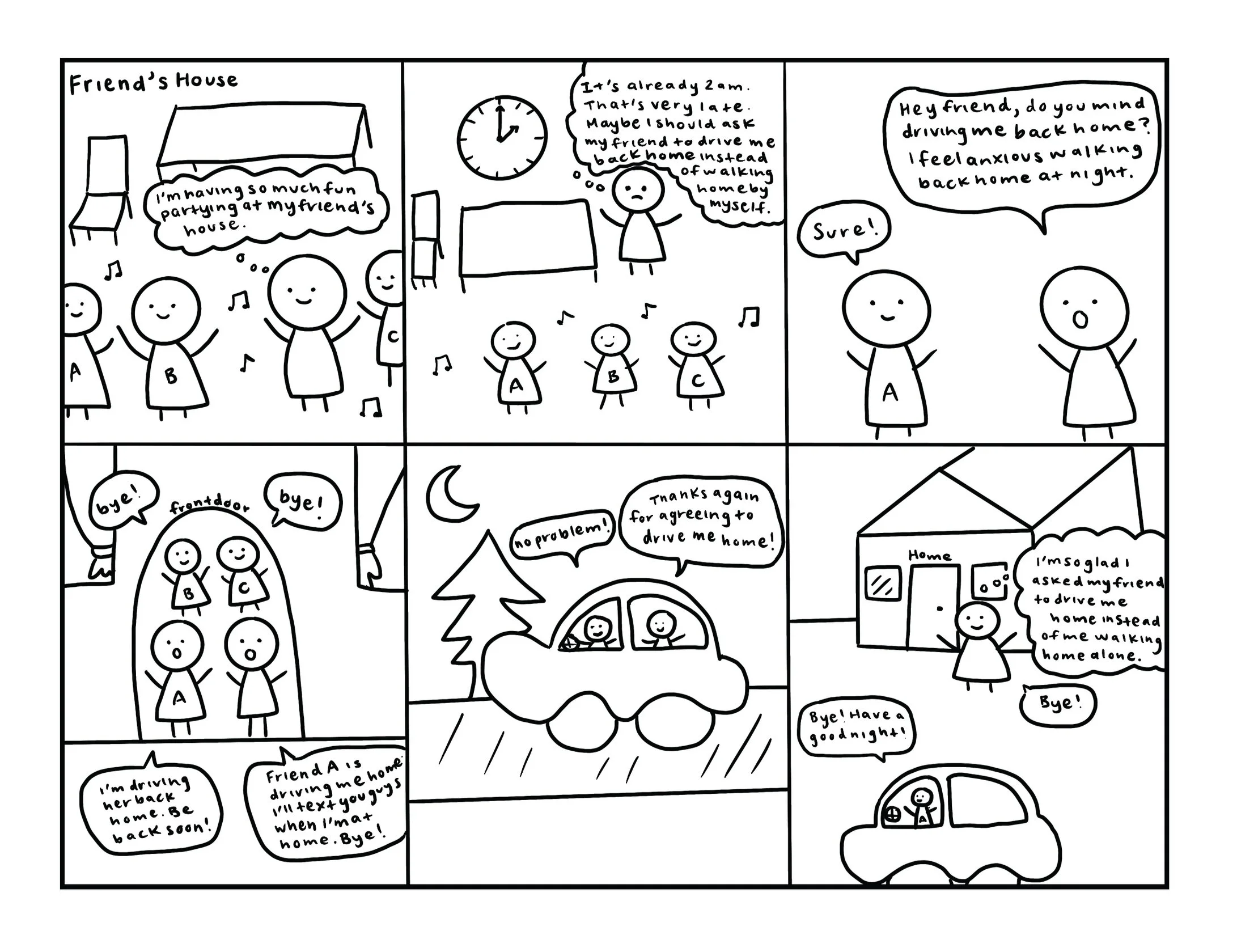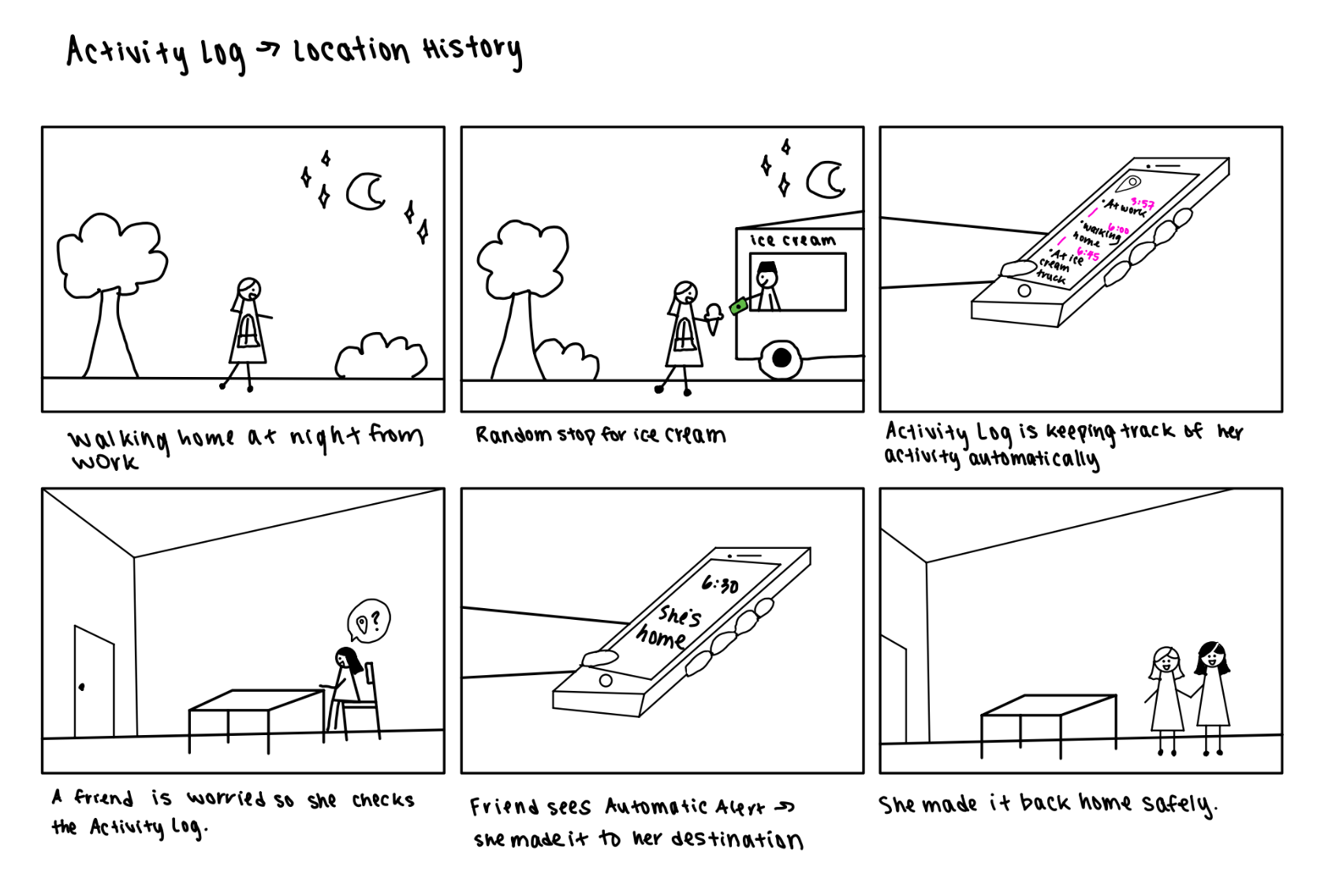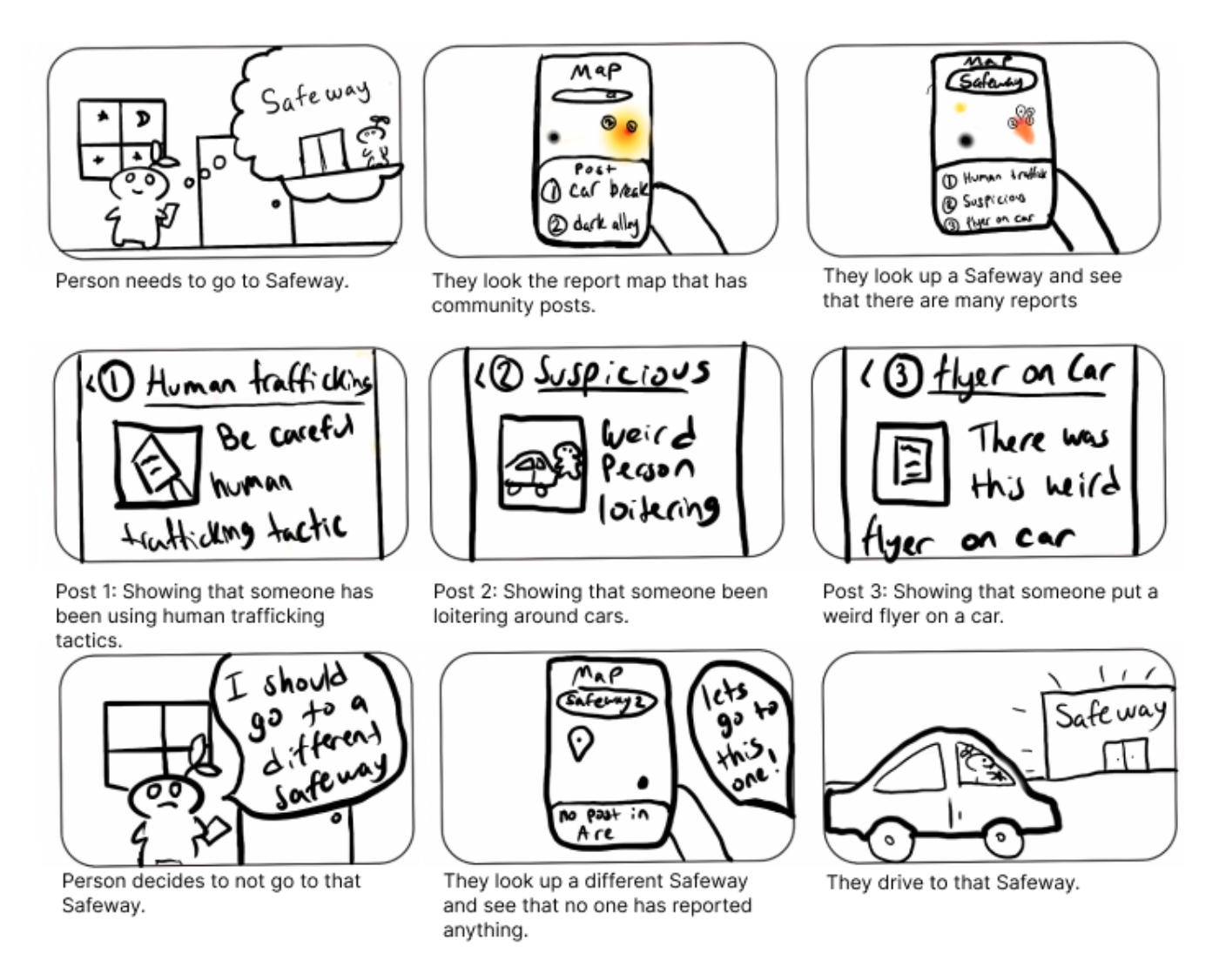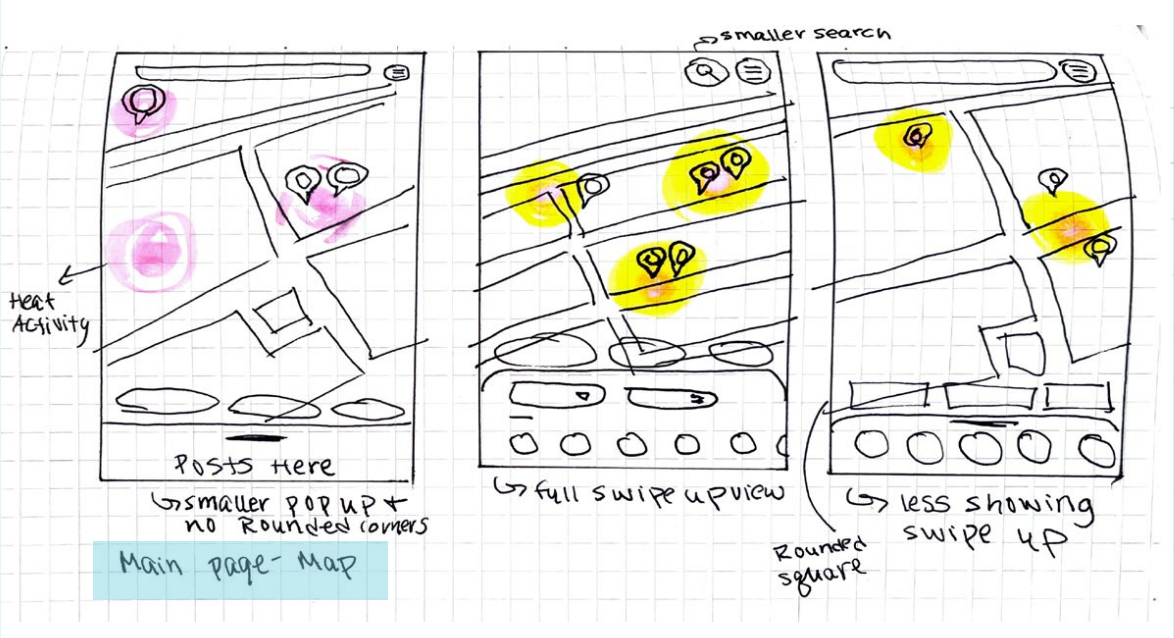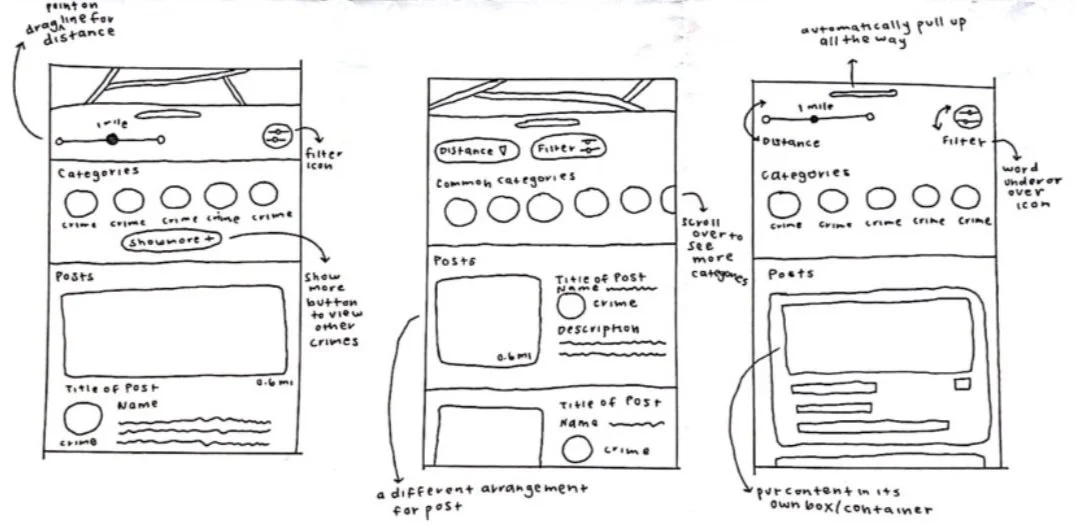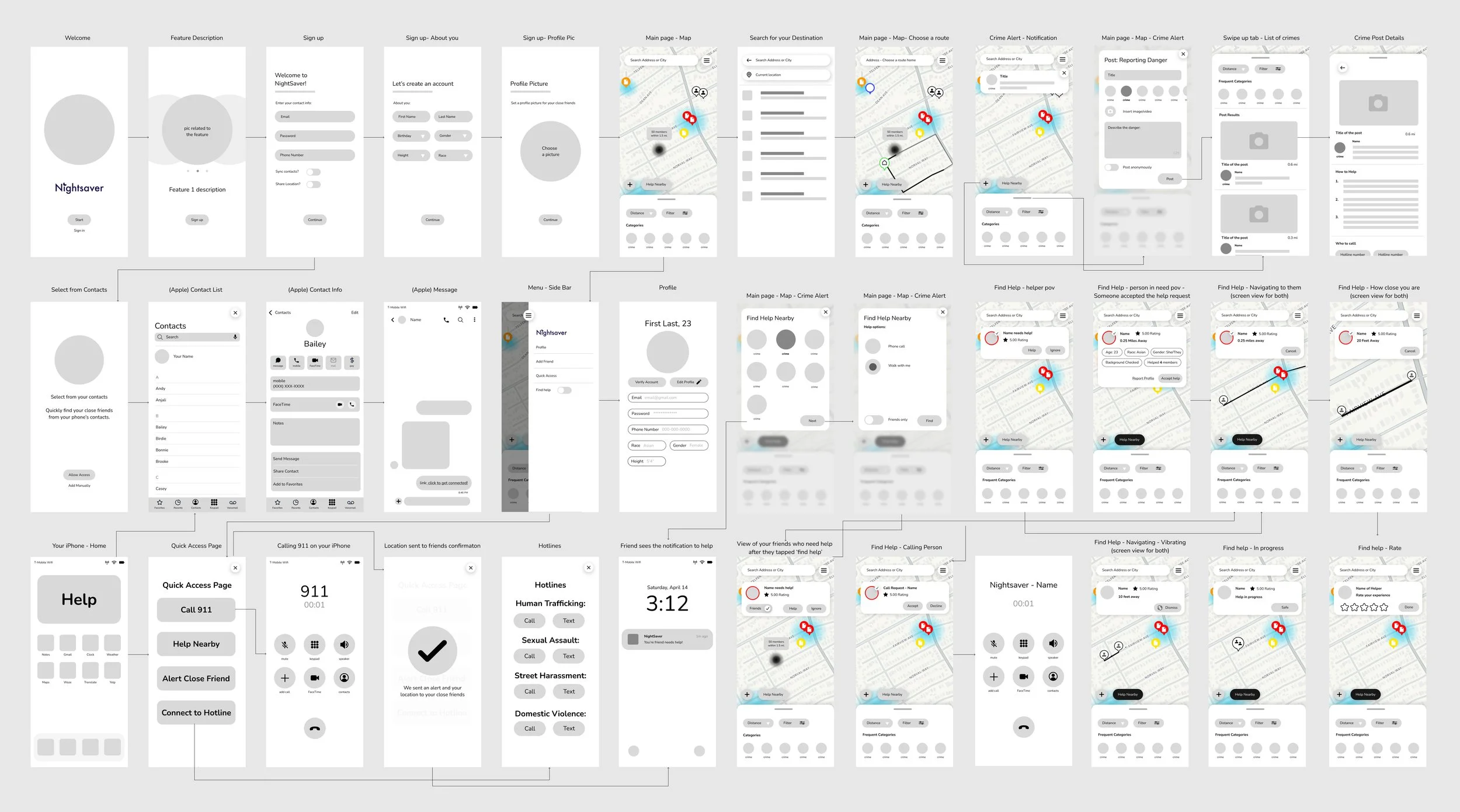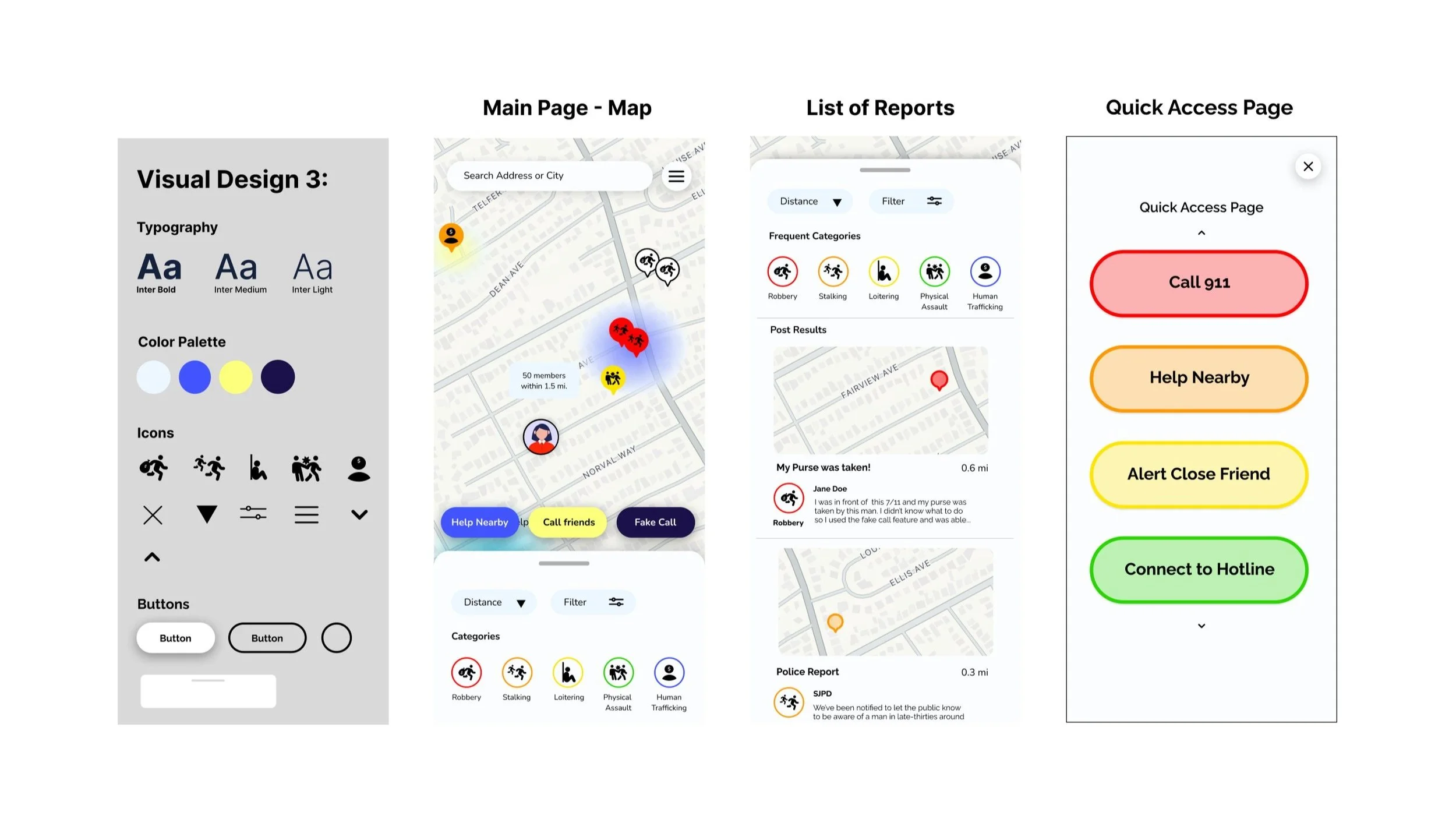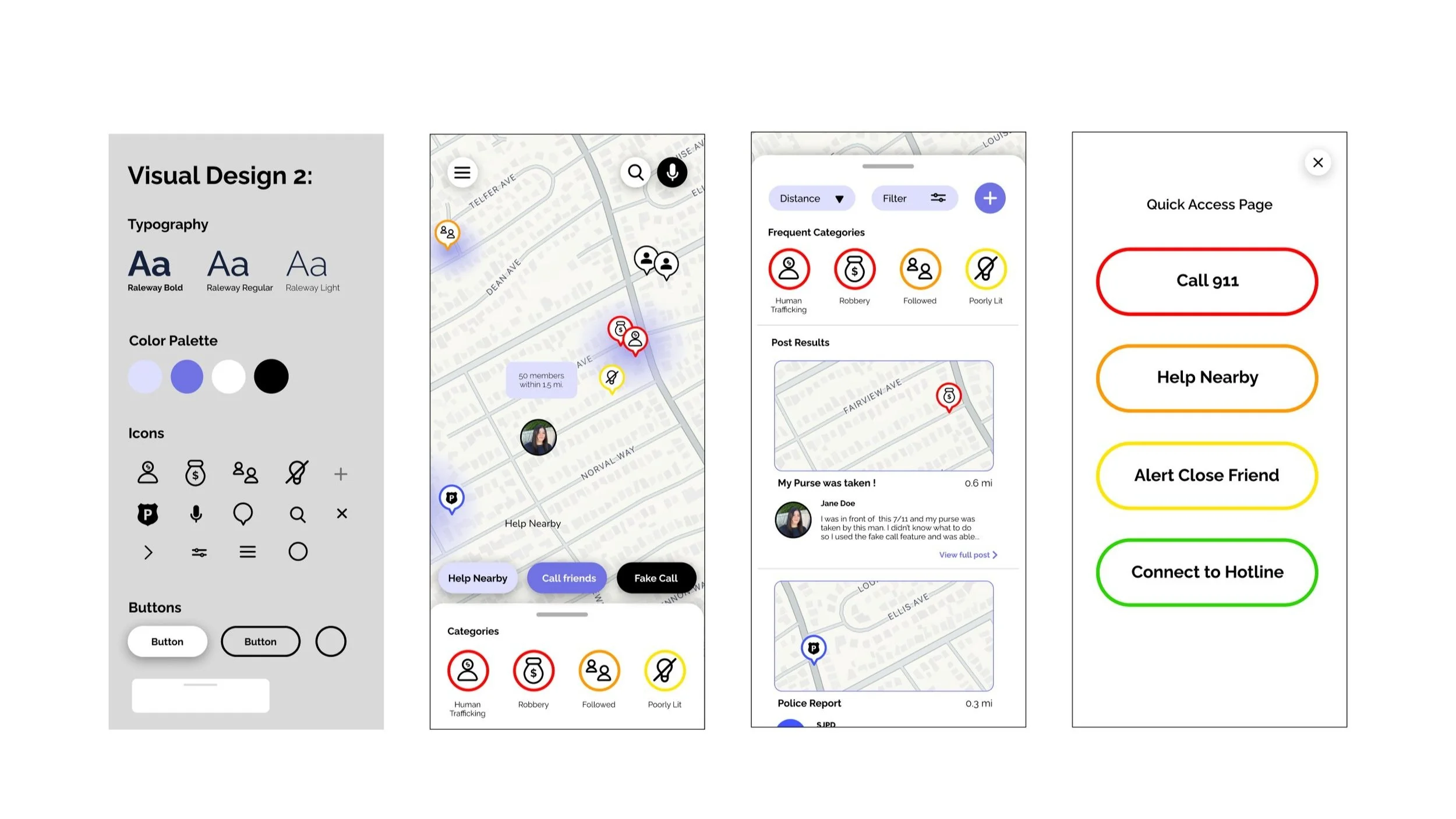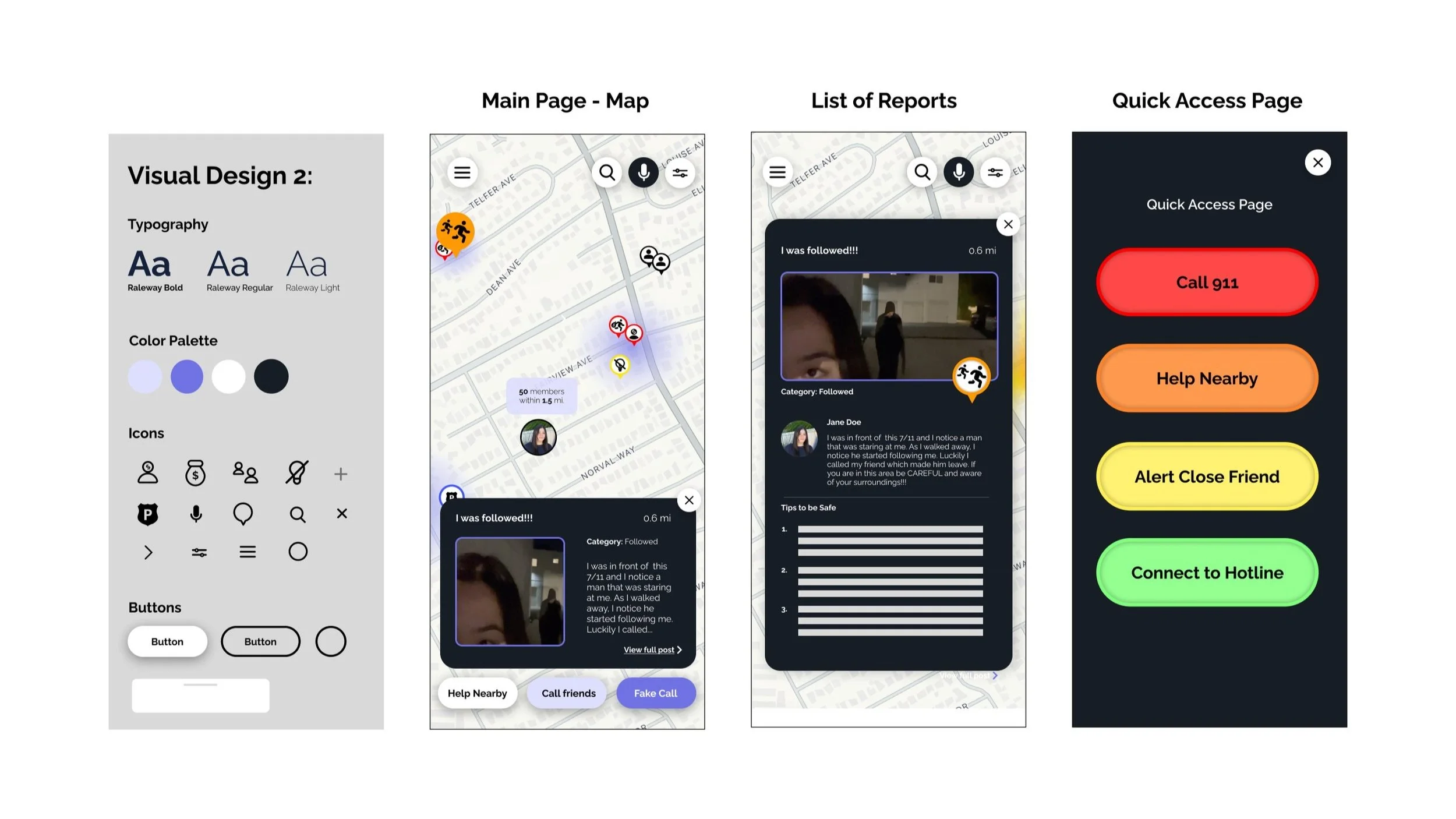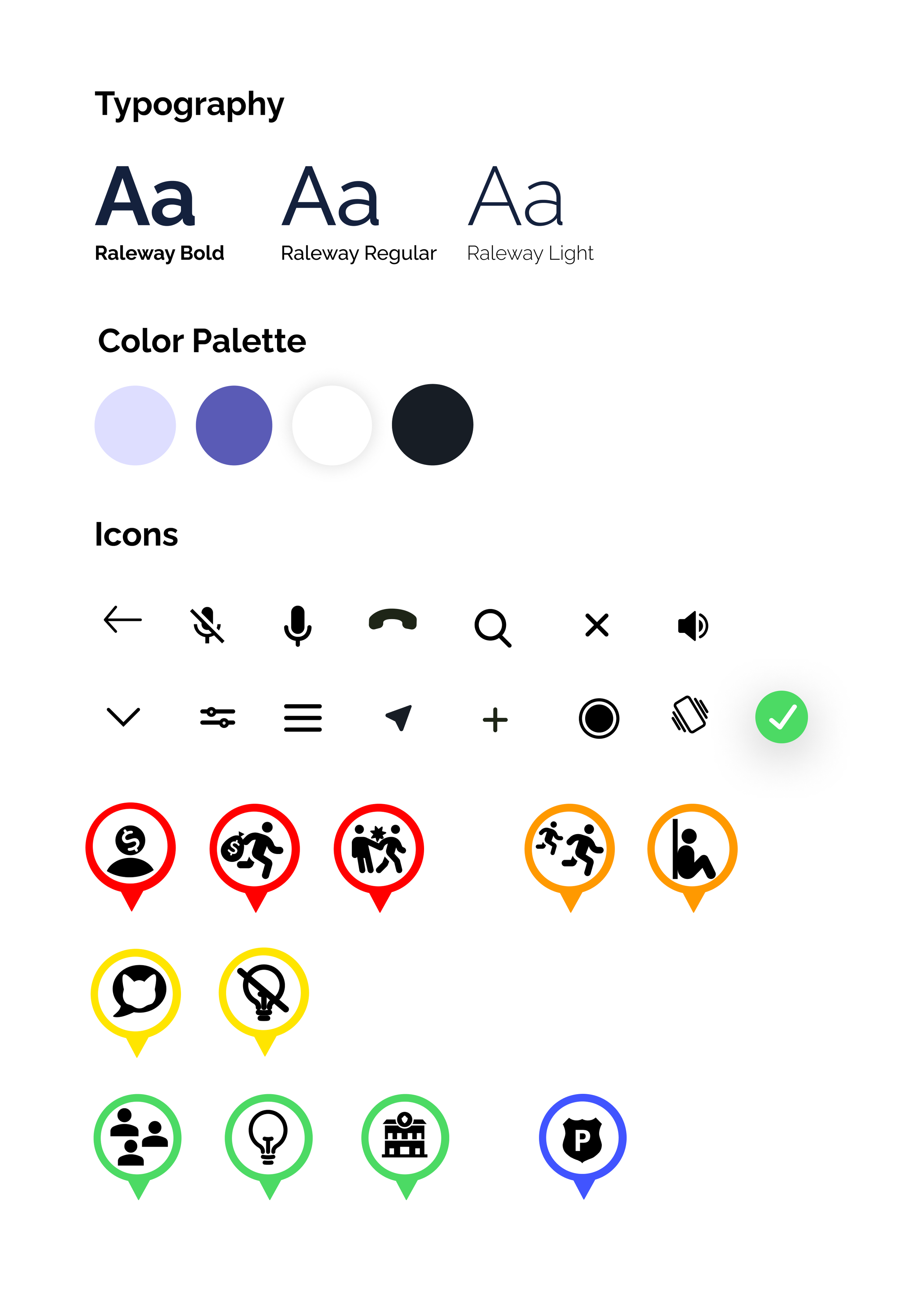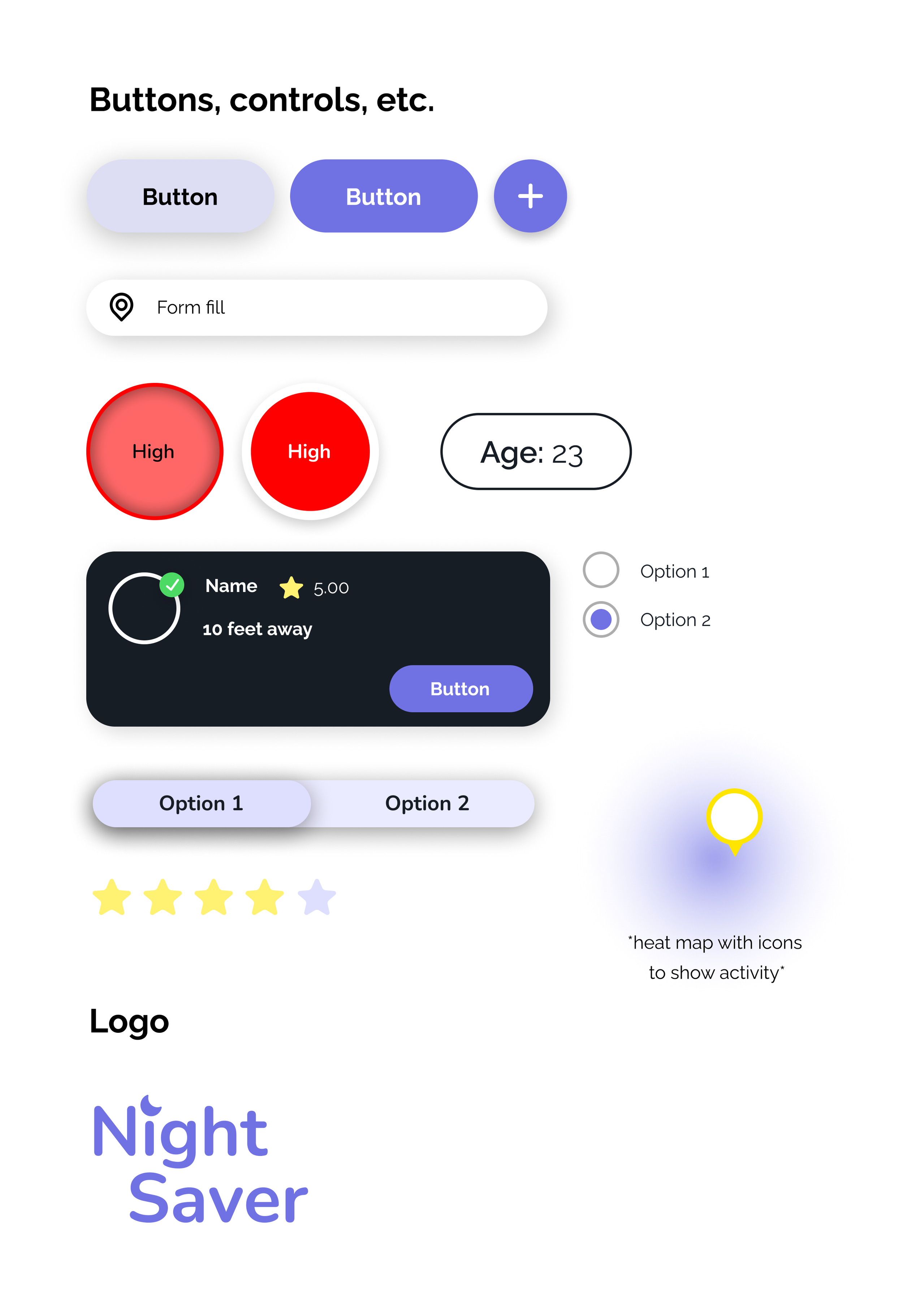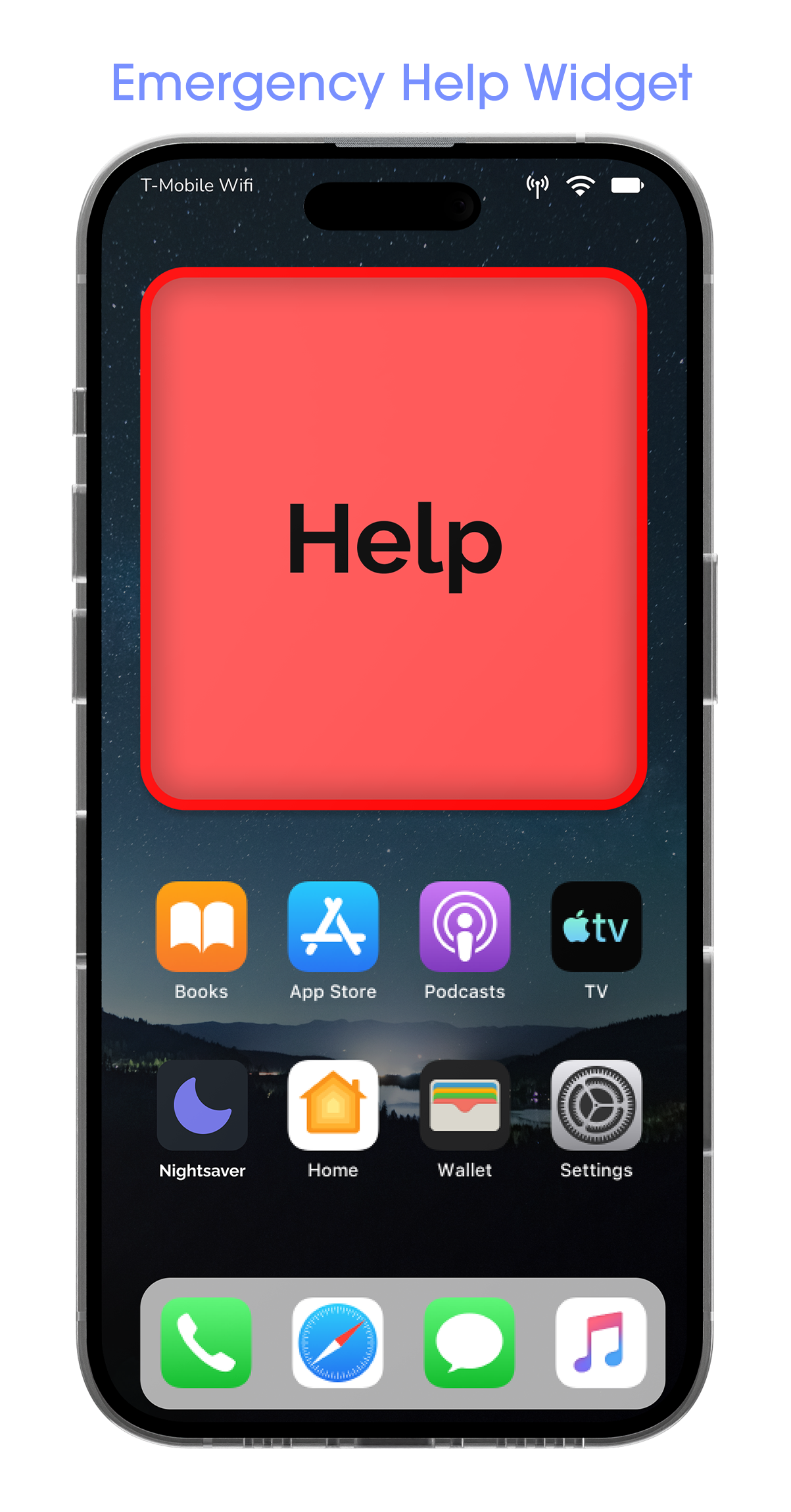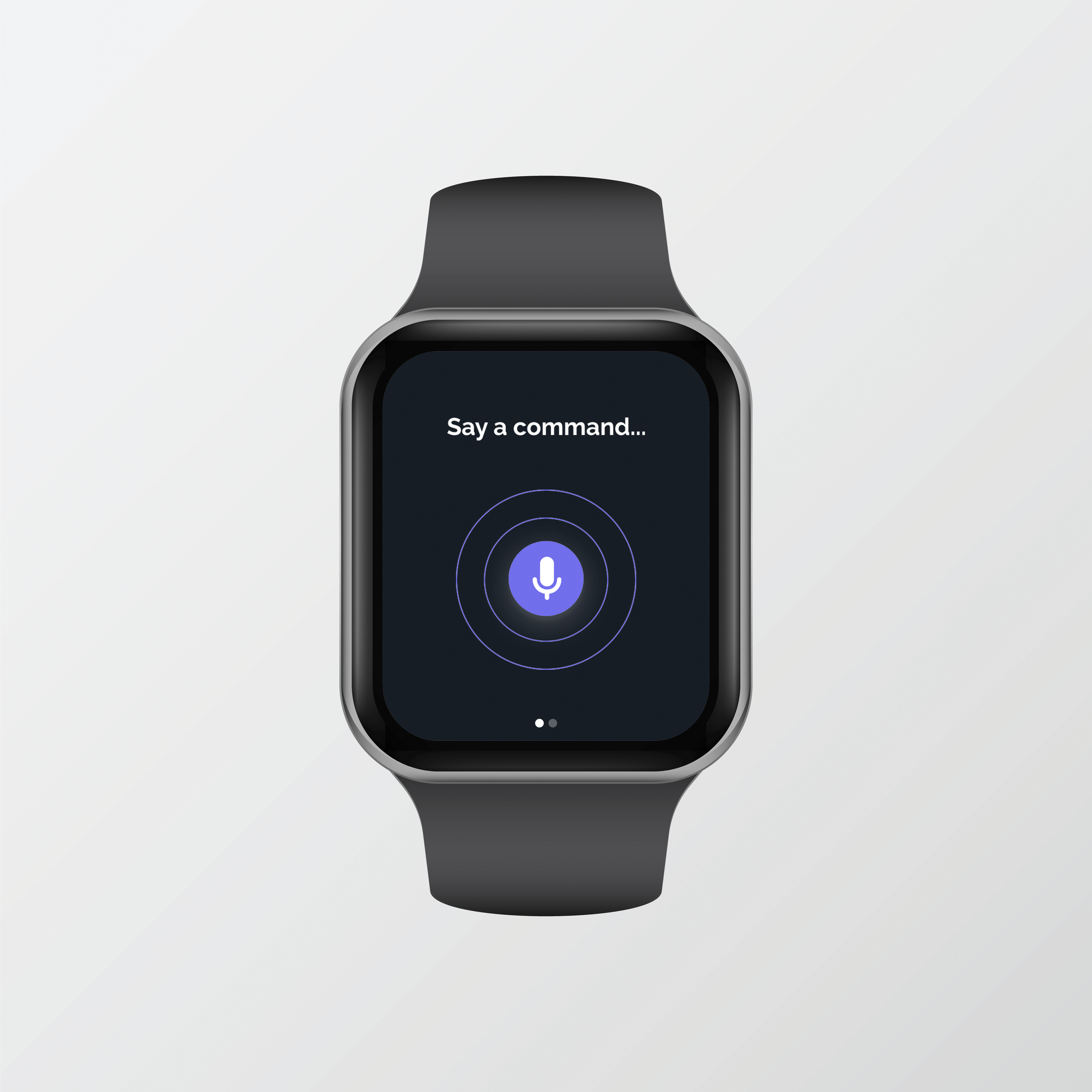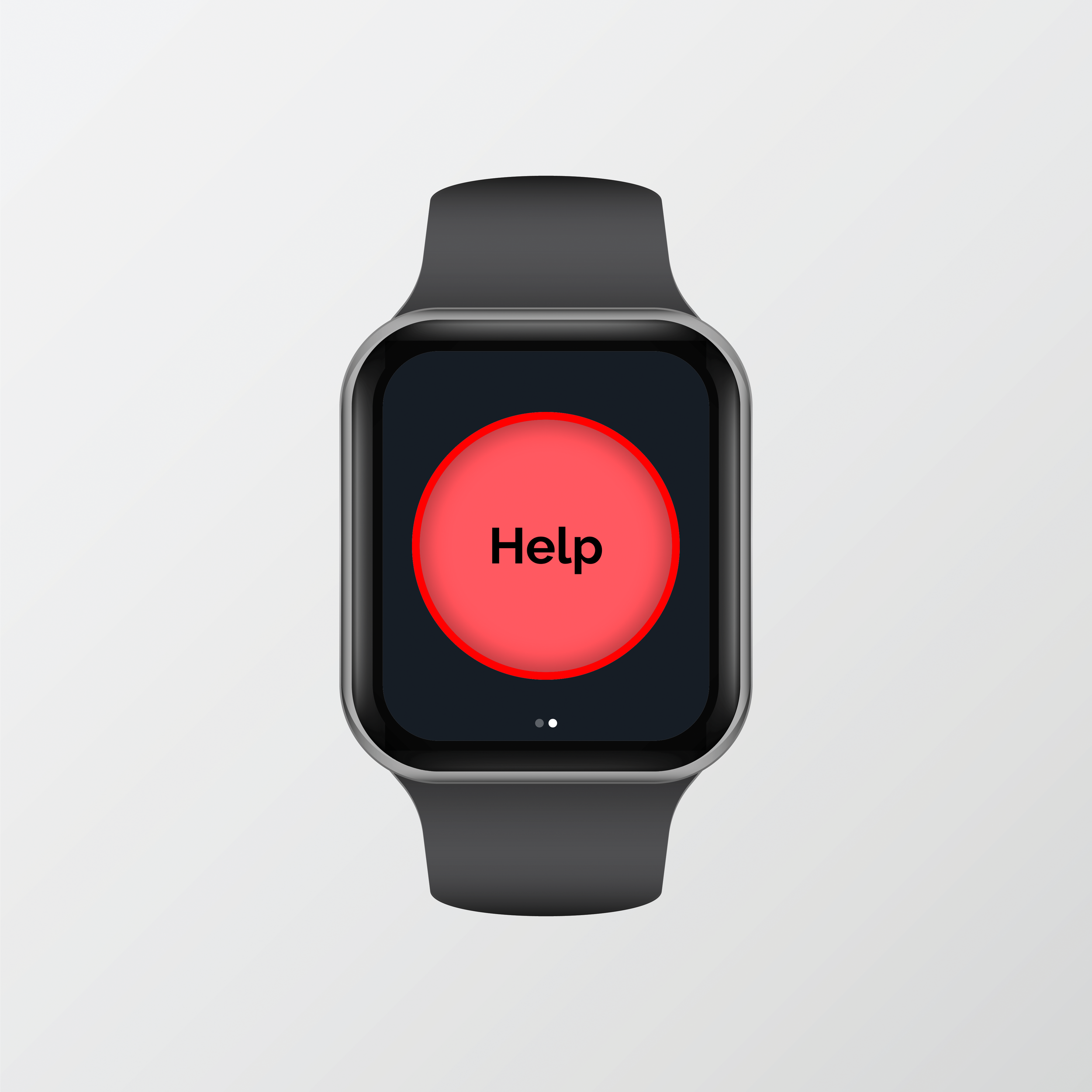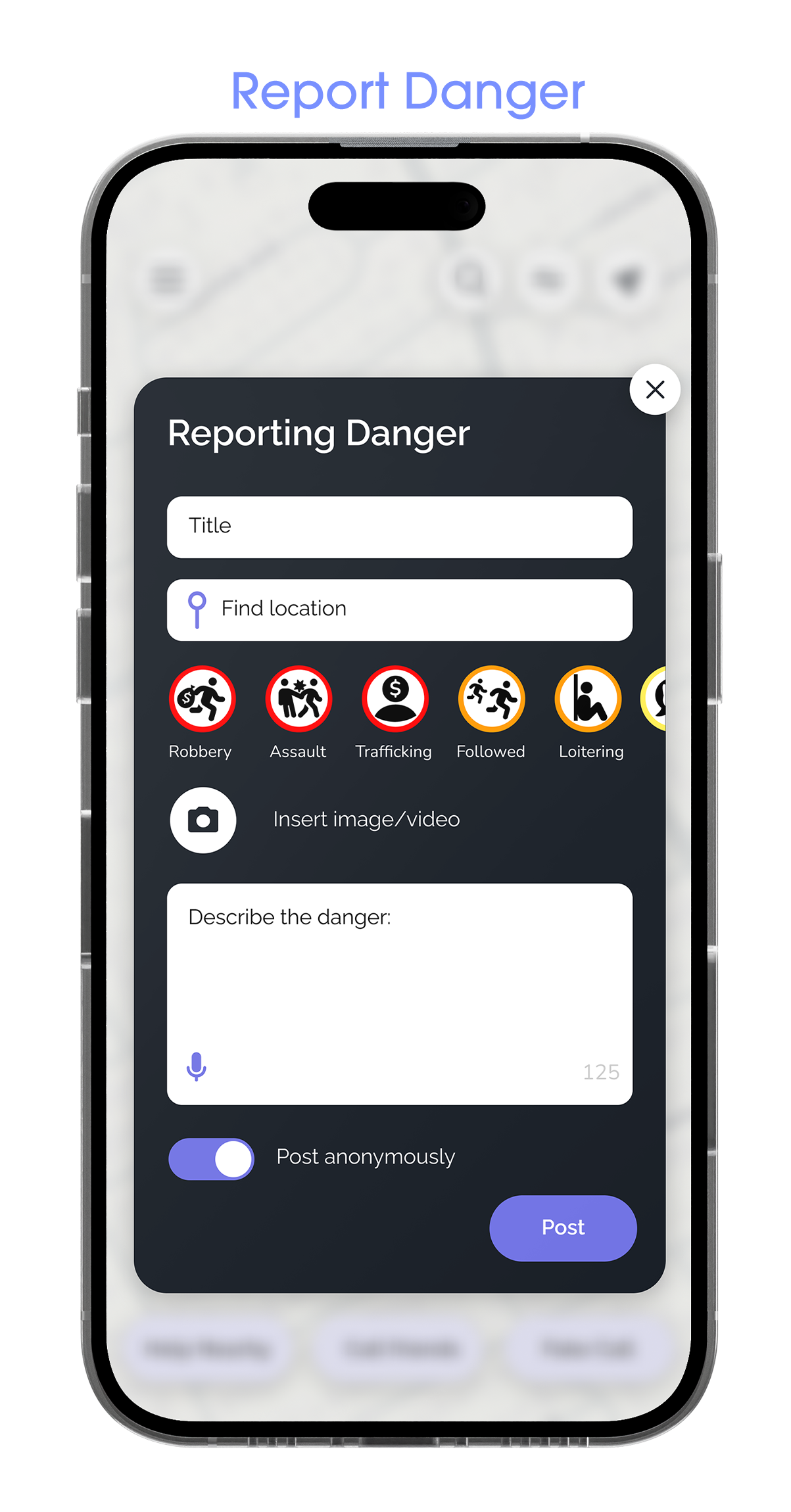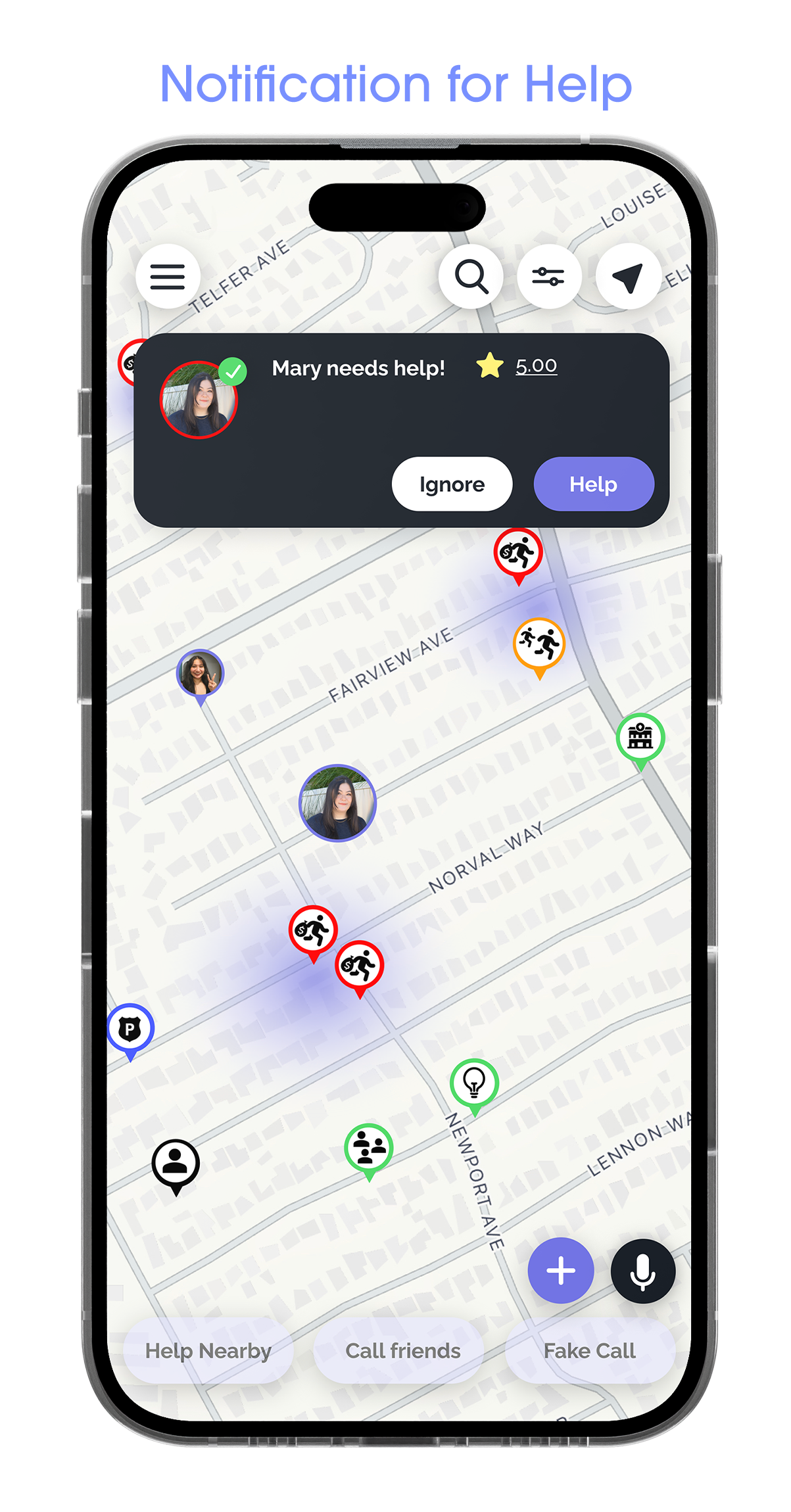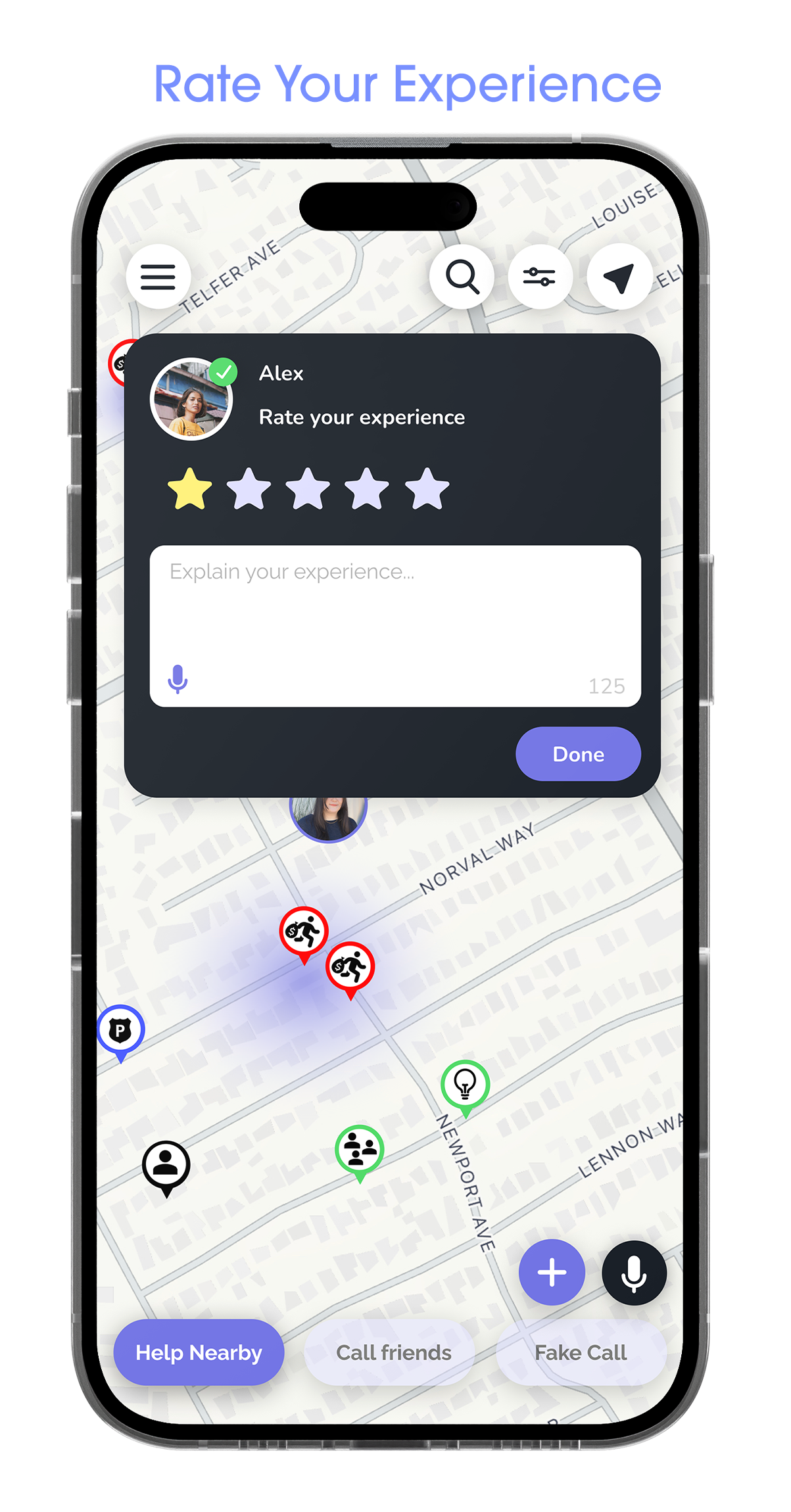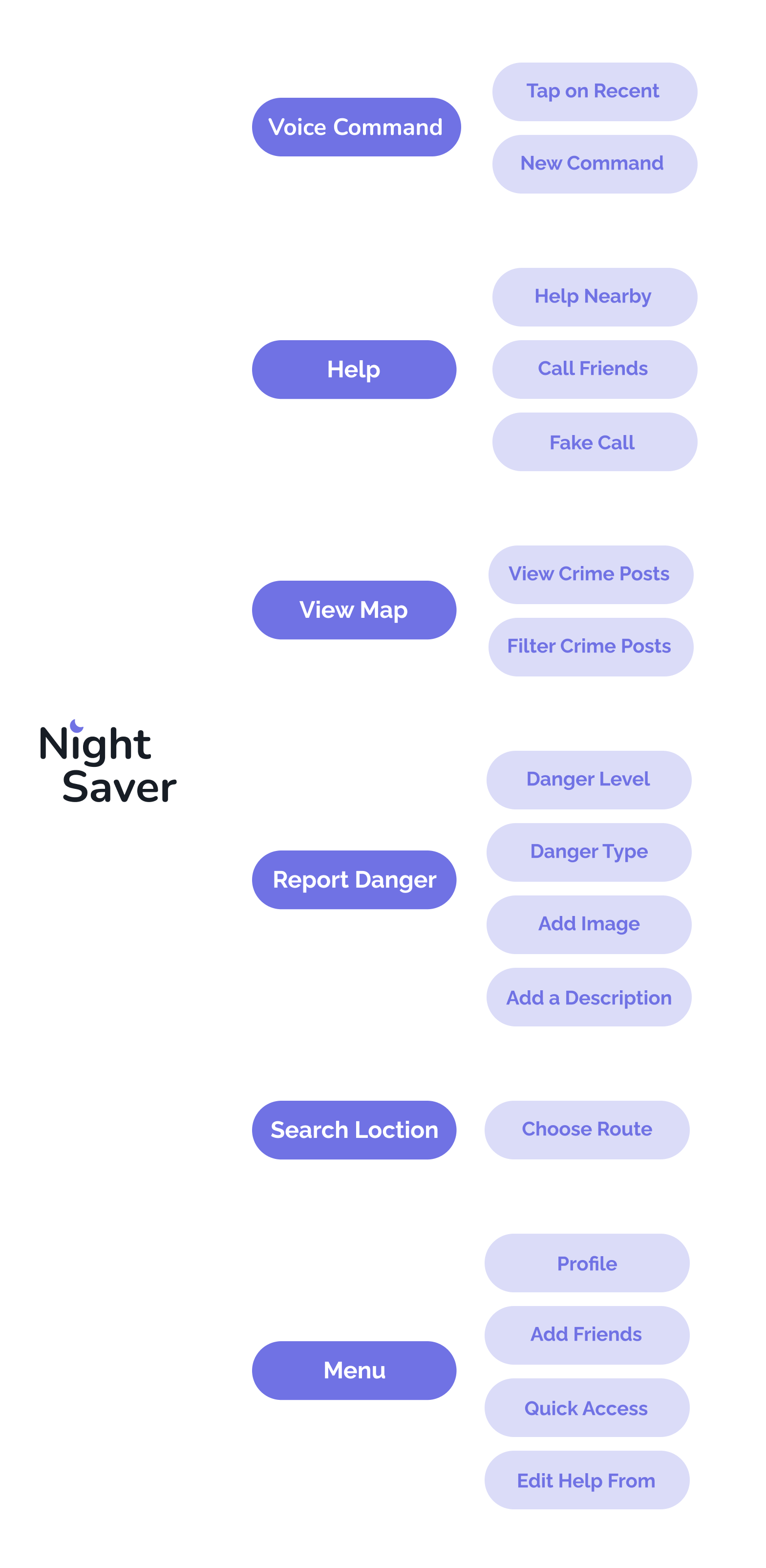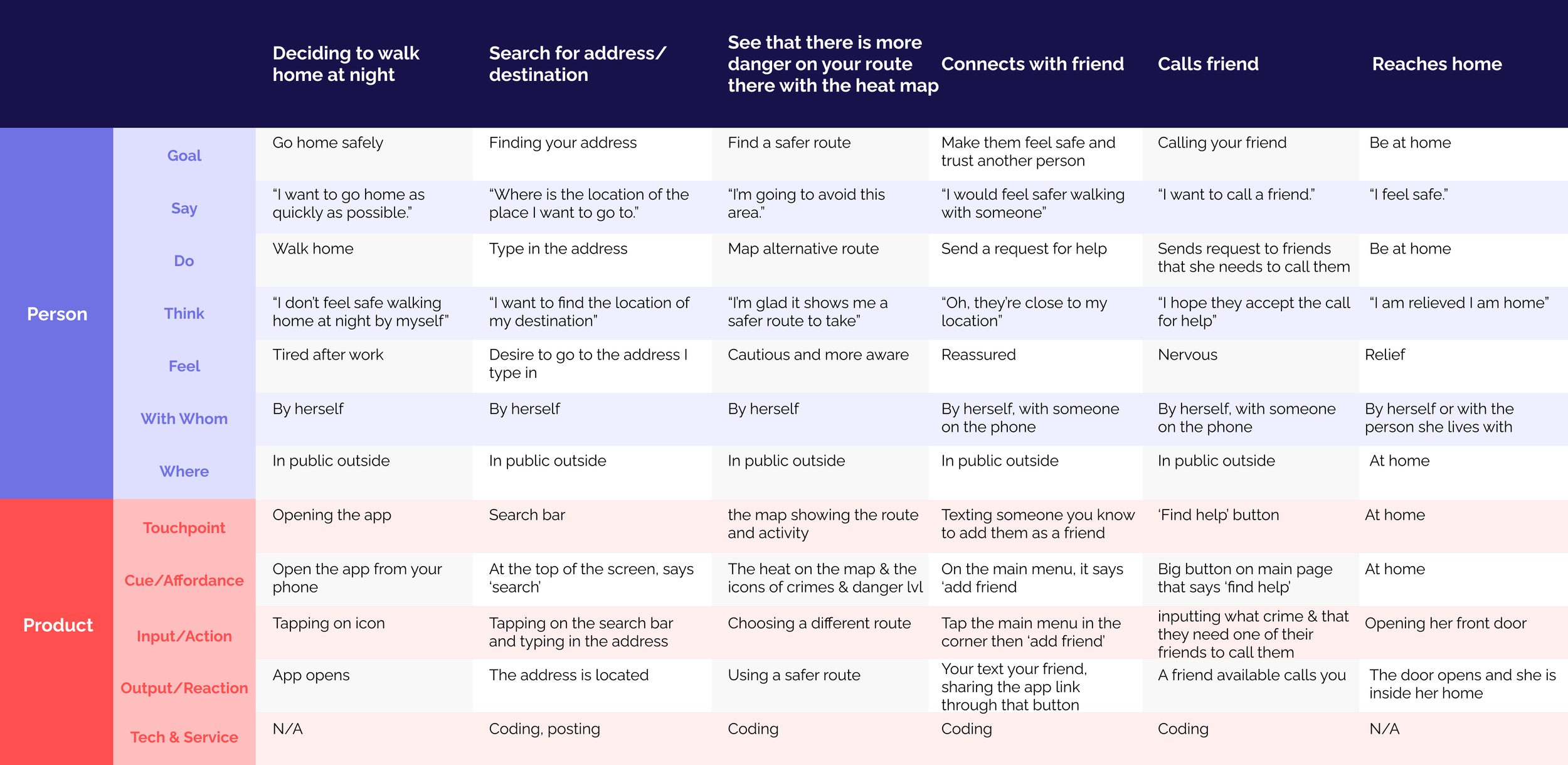NightSaver Case Study
This is the complete research and design case study for NightSaver: An app for women’s safety
About
Project Brief
Create a digital product that offers new ways of promoting safety from modern-day dangers.
How Might We…
Create a quick and easy way to access the resources people need to feel safe?
Help identify signs of potential danger?
Reduce the number of steps someone needs to feel safe in public spaces?
The Team
Sydney Avery, Lydia Lelapinyokul, Anna Fang, Yujung Lee
Solution
This app gives women a safety net for when they are out in public to provide a sense of relief. It helps them with in-the-moment dangers and danger prevention. It promotes a sense of safety within one’s community.
Research
Qualitative Questions
What strategies do women use to protect themselves from potential dangers when walking alone at night?
What are signals that people notice potential dangers/kidnappings/human trafficking?
When do they feel the most in danger?
What are the reactions when they feel in danger?
How often do they feel they need to be aware of their surroundings?
In what situations, do you feel the most comfortable in public?
How did you react when you felt you were in danger?
How often do you walk by yourself?
Flight or fight response?
An experience when you felt the most in danger?
Does the time of day and location affect how alert you must be?
How does gender play a role in how people feel about Safety in Public spaces
Primary Research
7 qualitative interviews of at least 30 min each, at least 3 observations of at least 30 min each
Interviewees:
Female, Professor of Women, Gender, and Sexuality Studies
Female, age 26, biracial, living on her own
Female, age 64, Asian, stay-at-home Mom
Male, 23, Asian
Female, Latina, college student
Female, 46, Asian, Mom
Male, 31, Asian
Observations:
Walking home from class at night
Walking around Union Square
Walking to your car in a parking lot at night
Interview Highlights
Key Quotes:
“For us specifically in the work that we do being survivor centered means respecting them with their decisions and their choices, because someone in the past has not unfortunately”
- Women, Gender, & Sexuality Professor & Rape Crisis Hotline Volunteer
“Once, I was followed by a random stranger on my way back home from campus. It was so scary. I never go out by myself at night again”
- Female College Student
Key Learnings
People have a fear of being perceived as vulnerable
There needs to be quick access to the features so they can alert others for help
This app needs to be reliable so incorporating the authorities as well as family and friends achieves that
It is best to take precautions in the first place so we needed to include features that prevent danger from happening
Quantitative Questions
Where are the most common places where people are getting kidnapped?
What are the most common ways people are protecting themselves?
What are the most common targets (ethnicity, race, age)?
What are the most common types of harassment experienced by women, and how do these vary by age and ethnicity?
What factors contribute to women feeling less safe in certain public spaces, such as parks or public transportation?
What kind of places in the community do women avoid?
What times of day or night do women go out least often?
Which groups of women most often experience violence or insecurity?
What are some of the most common forms of gender-based violence and harassment that women experience in public spaces, and how do they impact women’s sense of safety?
What strategies and interventions have been effective in promoting women’s safety in public spaces, and what are some of the limitations or unintended consequences of these approaches?
Secondary Research
6 reliable data sources (articles/reports/studies, etc) reporting on the who/what/where/when/why of this problem
Violence & Safety
https://statusofwomendata.org/explore-the-data/violence-safety/
Creating Safe & Empowering Public Spaces with Women & Girls
https://www.unwomen.org/en/what-we-do/ending-violence-against-women/creating-safe-public-spaces
The 3 Places Where Sexual Harassment Is Most Common
https://www.refinery29.com/en-us/2018/02/191526/stop-street-harassment-data
Young women in large cities are the main victims of violence in public space
https://www.cairn-int.info/article-E_POPSOC_550_0001--young-women-in-large-cities-are-the.htm
The Geography of Women’s Fear
https://www.jstor.org/stable/pdf/20000063.pdf
The Sexes’ Sense of Safety
https://farahandfarah.com/studies/sexes-sense-of-safety/
5 Similar Products
A list of at least 5 products/services at are trying to or have tried to address this problem (both successfully and unsuccessfully)
Noonlight - https://www.noonlight.com/
Life360 - https://www.life360.com/
Bsafe - https://www.getbsafe.com/
Invisawear - https://www.invisawear.com/
Circulo - https://encirculo.org/en/
Empathy - Storyboards
Drawing out storyboards of potential situations related to methods people normally take to avoid danger when outside in public to help us understand what they go through. putting ourselves in their shoes would help us create a better app.
Someone follows a person off the train
Someone follows a person off the train
*storyboards were split amongst all group members
Someone follows a person off the train
Concept Drafting
Trying to come up with different concepts for our app by drawing out a situation in which someone might use it
Concept: An activity log listing out your location history
Reason we didn’t choose this: How is this different from other existing apps?
Concept: Using a Trigger Word While Walking Home From The Club
Reason we didn’t choose this: People in danger might be in a situation where they can’t speak out loud and also won’t want to call the cops. They would rather find a more safe area.
Concept: Using a Trigger Word While Walking Home From The Club
Why we chose this: A warning post will allow people to view recent dangerous activity from their local community and avoid those areas ahead of time. Like Waze, it will be up to the people to post about the danger in the area.
Concept: Find help near me
Why we chose this: depending on the situation, some people don’t want to go through the trouble of calling the police. They might need help right then and there so this would solve that problem.
Thumbnails of Final Concept
Community Map: View areas of varying crime levels
Community Map: Post details of a recent crime in the area
Notification/Pop-up Alert of Danger
Concept Video
A video we made using a paper prototype to explain what the app does and when someone would use it. This helped further develop our concept.
First-Round Wireframes
This is the first round of wireframes we did. The feedback we received revealed that there were too many steps to get help in a moment of danger and panic. This is something we worked on fixing going forward.
Design Variations
We came up with design variations and ended up combining some of the options for our final design along with a few refinements.
*Each member made their own design variation
Style Guide
This is the toolkit used that summarizes the design choices
Final Design
Help in the Moment
When in danger there needs to be an easy way to get help ASAP so I have created multiple pathways for getting the right kind of help for you.
Danger Prevention
View recent reports of danger in your area posted by your community as well as police reports. Look for Safety posts in green so there is an area to go to when you feel in danger.
Help from your Community
Get help nearby ASAP from your community members to gain a sense of safety where you live. Your friends may not be close by in a moment of danger but someone from your community might be.
Demo
Skit with Final Prototype
We created a skit demonstrating a situation in which someone might use the app
Wireframes
This lays out the user flow between the screens and connects the information architecture to its visual design by showing paths between pages.
Site Map
This gives a good overview of what the app includes
Product Map
Future Development
By designing a safety app for women and feminine presenting people, we learned a lot about different types of dangers, how people experience danger in the real world, and understanding ways to help people access the help they need quickly and easily. Some further explorations that we want to tackle include...
Privacy
Not wanting to share their info/location with the app
Adaptability
Safety needs vary depending on the location, culture, and social norms
Privacy
Not wanting to share their info/location with the app
Adaptability
Safety needs vary depending on the location, culture, and social norms


